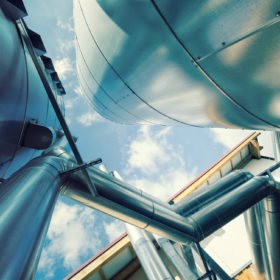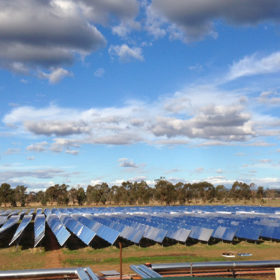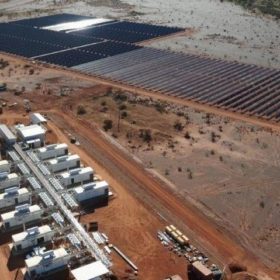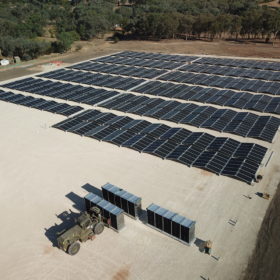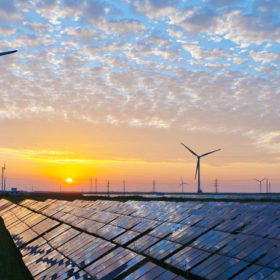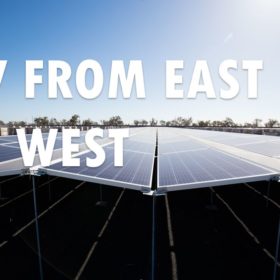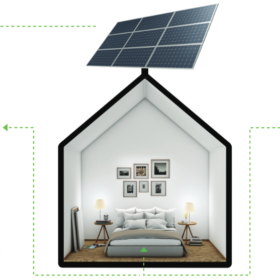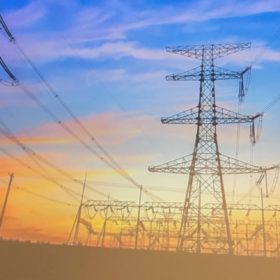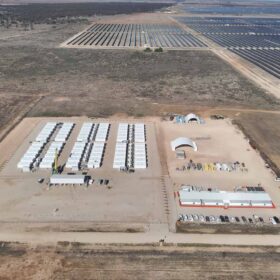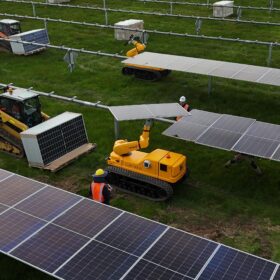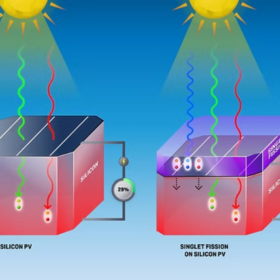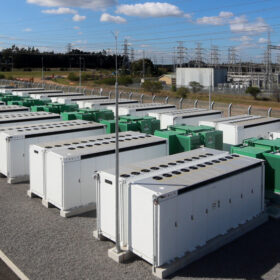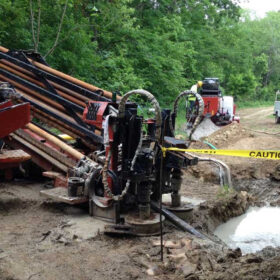Enough ambition (and hydrogen) could get Australia to 200% renewable energy
The possibilities presented by hydrogen are the subject of excited discussion across the world – and across Australia’s political divide, notoriously at war over energy policy.
Genex Power gets debt financing nod for two solar projects
The Sydney-based developer has received credit approval to fund two of its solar projects. The announcement comes only days after Genex resumed trading on the Australian stock exchange in the wake of the Northern Australian Infrastructure Fund’s decision to extend offer of funding for the 250 MW Kidston pumped storage hydro project.
First stage of landmark Agnew Gold Mine hybrid microgrid powers up
Distributed energy producer EDL has officially opened a 23 MW power station that integrates solar with gas and diesel generation to power Gold Fields’ Agnew Gold Mine in Western Australia. The project is part of an innovative hybrid microgrid, which will later add a wind array and battery storage.
Australian billionaires invest in 10 GW Northern Territory solar farm
Two of Australia’s richest people, Mike Cannon-Brookes and Andrew “Twiggy” Forrest, have jointly invested “tens of millions of dollars” in the ambitious Sun Cable projects, which would export solar energy from the Outback to power Singapore. The capital raising will enable developers Sun Cable to pay for development work for the undersea power link.
Pivotal role of corporate power purchase agreements in Australia’s energy transition
Over the last two years, corporate renewable power purchase agreements have become a major force in Australia’s large-scale renewable energy market. In hard figures, 70 leading Australian organizations have made the switch to renewable energy and procured nearly 2.3 GW of mostly solar and wind electricity and supported 5.2 GW of projects, finds the Business Renewables Centre of Australia.
Part 2 – South Australia: The nation’s renewable energy superstar
From an energy-hungry importer to a frontrunner in the decarbonization race, South Australia has set the bar high for how to efficiently transition to a low-emissions grid dominated by renewables. With wind and solar already supplying more than a half of its electricity, the state’s energy transition shows no sign of letting up. In fact, South Australia is gearing up to accelerate the pace of its clean energy transition and expand its big PV fleet as it moves toward its 2030 target of “net” 100% renewables.
Swiss asset manager invests in Western Australia’s community owned virtual power plant
Swiss investment firm SUSI Partners is investing up to $50 million in a residential solar-plus-battery project enabling participants from communities across Western Australia to generate and consume their own clean power for up to 90% of their needs. The project, which began a year ago, and involves residents leasing solar PV and battery systems from a not-for-profit organisation.
A guided tour of Australia’s solar and storage market; Part 1: Victoria
Abundant sunshine, favorable policy settings and high power prices have long placed Australia at the cutting edge of rooftop solar uptake. The more recent utility-scale boom has further enhanced its status as a PV leader. Battery adoption, microgrids, EVs and green hydrogen are all taking shape, yet what should be an Aussie smart energy no-brainer continues to be dogged by mounting investment uncertainty and a toxic debate on the national level.
The journey to NEM 2.0
Australia made its first moves to open up its energy industry in the 1990s, when the National Electricity Market (NEM) was first created, and many of the rules and regulations from back then are still in place today. But the rise of renewables in the 21st century, argues Clean Energy Investor Group Chair Rob Grant, necessitates a rethink of this market structure.
Clean energy industry fears new transmission access rules will stymie investment
The Australian Energy Market Commission’s proposed transmission access model has come under fierce criticism from the clean energy industry for being unnecessarily complex and likely to increase the cost of capital for future generation and storage investment.
